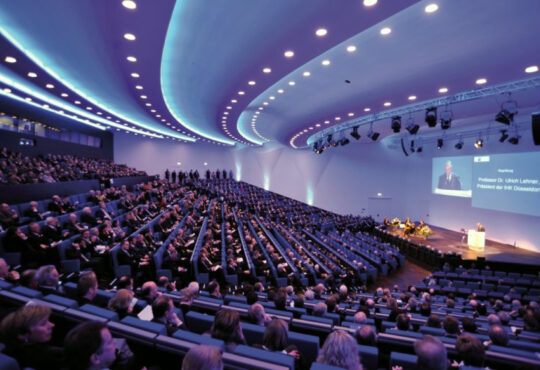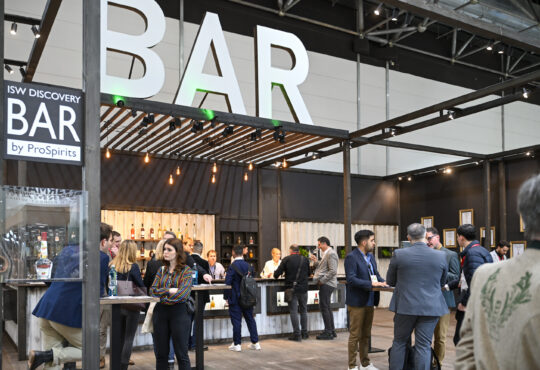ProWein goes Japan: the philosophy of the Japanese wine and epicurean culture

Messe Düsseldorf’s international portfolio is growing continuously. This is why wine and spirits professionals from all over the world will meet from 12 to 14 April 2023 at Wine & Gourmet Japan – powered by ProWein. As early as next year this new event will already be held as ProWine Tokyo. In Germany, however, Japanese wine is (still) quite unknown. When we think of wine and Japan, what probably first comes to mind is sake. Which is why we turned to Falstaff Editor-in-Chief Ulrich Sautter to find out more about Japanese wine culture.
Messe Düsseldorf is now represented in 139 countries – supported by 6 international subsidiaries and 76 foreign representations around the globe. In 2022/23 alone we have posted 16 new events held in Düsseldorf and the world over. One of these is: Wine & Gourmet Japan – powered by ProWein. Our animation shows the other new events that have joined the fray:
Asia’s new ProWein spin-off will still be held in Tokyo until 14 April 2023 as part of the Japanese food trade fair FABEX. Next year will then see this satellite of the international trade fair for wines and spirits finally become ProWine Tokyo. In this process it will continue benefiting from the appeal of FABEX and its Japanese food fairs Dessert Sweets & Bakery Festival, Food & Drink OEM Matching Expo and Japan Noodles Industry Fair and Premium Food Show.
Japan and Wine: Ulrich Sautter on this exciting pairing
But why Japan of all places? Not only do the Japanese love drinking good wines – this Asian country also boasts the third largest wine market in the world after the USA and China. This may come as a surprise for wine lovers unfamiliar with the market – which is why have spoken to an expert in the know: Ulrich Sautter.
As Editor-in-Chief at food, wine and travel magazine Falstaff Sautter wrote an article about “Umami in deutschen Weinkellern” (Umami in German wine cellars) thereby providing insights into the work of Japanese cellarmasters for German wines. In this interview he reveals more about both the German and Japanese wine culture.
“Japanese wine lovers show great respect for wine-making traditions and wine styles”
Mr Sautter, how do you think wine culture has evolved over the past few years?
Ulrich Sautter: My impression is that we’re increasingly seeing two parallel wine universes: on the one hand, there’s demand for wine in high volumes produced at the lowest cost possible (and therefore inevitably using industrial methods). At the other end of the market, no expenses are spared to further increase the quality of wine using artisanal methods – and to further differentiate the style and taste of wines. Today, the best wines often no longer hail from a vineyard but from a single, specific site of this vineyard.
Where do you place Japanese culture on this spectrum? What makes it so special and to what extent does it differ from ours?
Unfortunately, I haven’t been to Japan – but on the basis of my Japanese contacts living in Germany, they already show an extraordinarily well-developed understanding of wine as a cultural asset that is embedded in a cultural context. This starts with their acute sense of the impact wine growing has on the landscape and culminates in the great respect they show for wine-growing traditions and wine styles.
At times, I have to explain to German readers almost like a missionary that the sweetness of a Riesling Auslese is a natural property of this wine and has nothing to do with “sugar”. With people who’ve grown up in Japan, even if they know little about German wine, I perceive a different attitude – along the lines: if the wine-growing history has produced the “Auslese” (Selection) category, then there’s a reason for it to be sweet. And this is immediately followed by a curiosity to get to know and understand this.
“Matured Riesling often has an ‘umami’ taste”
Now you’ve got us curious. Is a flavour like umami, mainly known from Japanese cuisine, also found in wine?
I owe Fumiko Tokuoka from the Biffar wine estate in Deidesheim, Palatinate for an important insight into this topic. She pointed out to me that mature Riesling often has an umami taste. And she’s right! Maybe we can even take this one step further: to my mind, mature champagnes (and sparkling wines) also display umami flavours. One reason for this could be that the decomposition of the yeast cells still present in the wine from the fermentation produces amino acids including glutamic acid, which triggers the umami receptors in our sense of taste. If this assumption is right, every wine that was bottled unfiltered, should develop an umami taste.
A tip, by the way, for all those who find it difficult to identify umami: simply prepare some dashi for yourself – it doesn’t take much effort – this way you can train your umami receptors – the same way we use caffeine dissolved in water to taste bitterness or table salt dissolved in water to taste saltiness.
We will definitely give that a try! What else should we know about Japan’s epicurean culture?
Epicurean culture in Japan bears a strong resemblance to its French counterpart where they go in for wine and food pairing. And there’s something else I find remarkable and fascinating: when you watch a sushi master cutting sashimi – you see razor-sharp precision in the truest sense of the word! The cut and profile have to be just so. And it’s precisely these abstract considerations that give rise to such sensuality when eating!
Thank you very much Mr Sautter for your exciting insights and informative interview.
Have we whetted your appetite to find out more about Japanese wine culture? Or do you already have a favourite Japanese wine? Let us know in the comments section!







